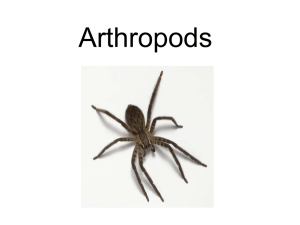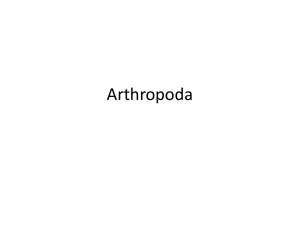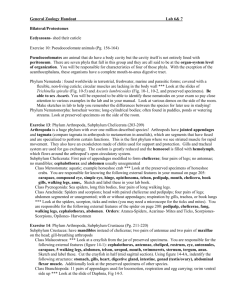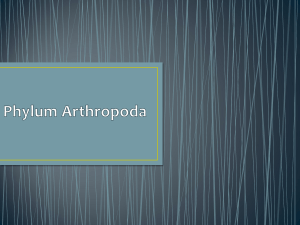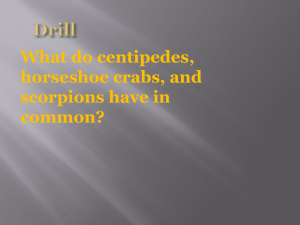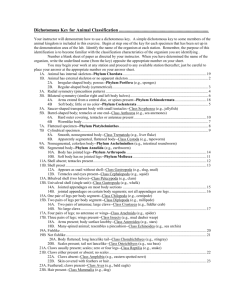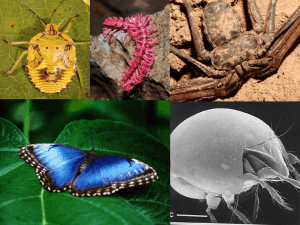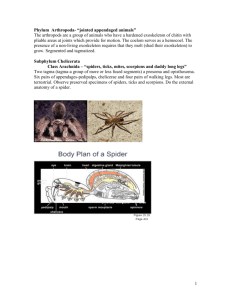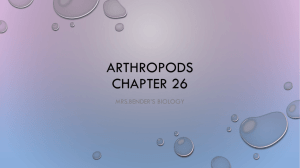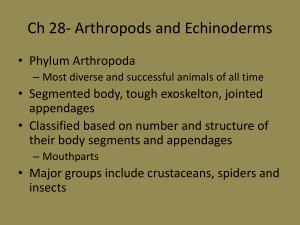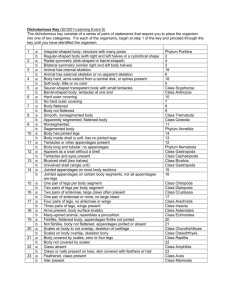ARTHROPODA (ADVANCED INVERTEBRATES) ARTHROPODA
advertisement
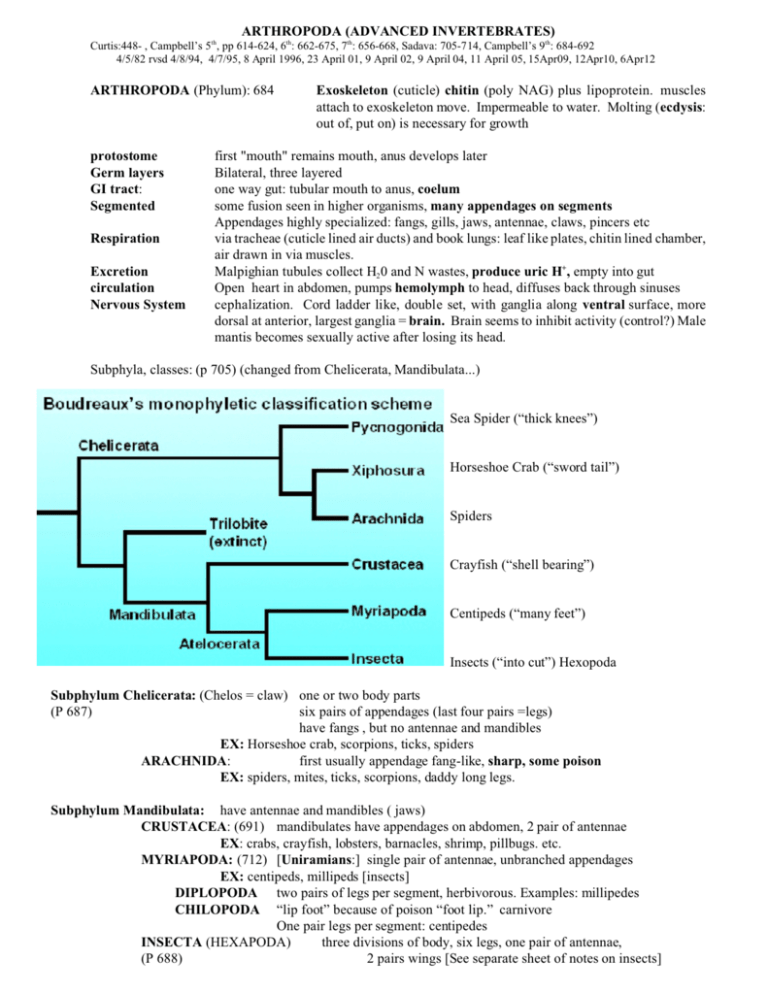
ARTHROPODA (ADVANCED INVERTEBRATES) Curtis:448- , Campbell’s 5th, pp 614-624, 6th: 662-675, 7th: 656-668, Sadava: 705-714, Campbell’s 9th: 684-692 4/5/82 rvsd 4/8/94, 4/7/95, 8 April 1996, 23 April 01, 9 April 02, 9 April 04, 11 April 05, 15Apr09, 12Apr10, 6Apr12 ARTHROPODA (Phylum): 684 protostome Germ layers GI tract: Segmented Respiration Excretion circulation Nervous System Exoskeleton (cuticle) chitin (poly NAG) plus lipoprotein. muscles attach to exoskeleton move. Impermeable to water. Molting (ecdysis: out of, put on) is necessary for growth first "mouth" remains mouth, anus develops later Bilateral, three layered one way gut: tubular mouth to anus, coelum some fusion seen in higher organisms, many appendages on segments Appendages highly specialized: fangs, gills, jaws, antennae, claws, pincers etc via tracheae (cuticle lined air ducts) and book lungs: leaf like plates, chitin lined chamber, air drawn in via muscles. Malpighian tubules collect H2 0 and N wastes, produce uric H+, empty into gut Open heart in abdomen, pumps hemolymph to head, diffuses back through sinuses cephalization. Cord ladder like, double set, with ganglia along ventral surface, more dorsal at anterior, largest ganglia = brain. Brain seems to inhibit activity (control?) Male mantis becomes sexually active after losing its head. Subphyla, classes: (p 705) (changed from Chelicerata, Mandibulata...) Sea Spider (“thick knees”) Horseshoe Crab (“sword tail”) Spiders Crayfish (“shell bearing”) Centipeds (“many feet”) Insects (“into cut”) Hexopoda Subphylum Chelicerata: (Chelos = claw) one or two body parts (P 687) six pairs of appendages (last four pairs =legs) have fangs , but no antennae and mandibles EX: Horseshoe crab, scorpions, ticks, spiders ARACHNIDA: first usually appendage fang-like, sharp, some poison EX: spiders, mites, ticks, scorpions, daddy long legs. Subphylum Mandibulata: have antennae and mandibles ( jaws) CRUSTACEA: (691) mandibulates have appendages on abdomen, 2 pair of antennae EX: crabs, crayfish, lobsters, barnacles, shrimp, pillbugs. etc. MYRIAPODA: (712) [Uniramians:] single pair of antennae, unbranched appendages EX: centipeds, millipeds [insects] DIPLOPODA two pairs of legs per segment, herbivorous. Examples: millipedes CHILOPODA “lip foot” because of poison “foot lip.” carnivore One pair legs per segment: centipedes INSECTA (HEXAPODA) three divisions of body, six legs, one pair of antennae, (P 688) 2 pairs wings [See separate sheet of notes on insects]
